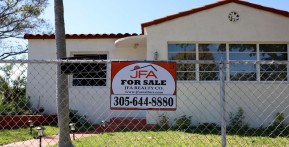After five consecutive months of increases, the commercial mortgage-backed security rates fell in August to 10.12 percent, recording a drop of 21 basis points.
A fall in delinquency rates indicated that the number of borrowers falling behind on their payment has come down.
This is the largest one month drop since November 2011, Trepp LLC, a leading provider of information, analytics and technology to the CMBS, commercial real estate and banking markets said in its report.
The percentage of loans seriously delinquent – 60 plus days delinquent or in foreclosure – have also come down 23 basis points.
"It was a great summer for CMBS investors from a performance point of view, as spreads plunged sharply from Memorial Day to Labor Day," said Manus Clancy, senior managing director of Trepp. "Now the market has something else to hang its hat on: falling delinquency rates. We expected a near term peak in the summer and we got it. For the immediate future, the worst of the delinquencies should be behind us."
While apartment, hotel and office loans improved, industrial and retail sectors weakened.
This improvement in delinquency rates is driven by two factors.
“First, loan resolutions remained elevated. Almost $1.5 billion in loans were resolved in August with losses. The other factor that contributed to August’s lower rate was that most of the 2007 securitized loans have now passed their maturity date," the report said. "The upward pressure that these loans were putting on the delinquency rate when they could not be refinanced upon maturity is now largely gone.”
Foreclosures continue
Meanwhile, across the country several commercial properties seem to be going into foreclosure. For instance, the Rockford Register Star quoted a report by the Congressional Oversight Panel estimate, which showed that $1.4 trillion worth of commercial real estate loans were going to come due between 2010 and 2014, and close to $700 billion were under water.
These losses would make even healthy banks reluctant to lend, thereby hampering the growth of the economy, the report said.
“A lot of these loans were made in the good times, 2006, 2007 and even 2008,” Rick Bastian, CEO of Beloit, Wis.-based Blackhawk Bank told the Rockford Register Star. “What’s happened since is that vacancy rates have increased, rents have decreased and that’s driven capitalization rates up. Now, you have commercial property owners who need to sell but buyers aren’t offering what they owe, or (owners want to) refinance and the property values have fallen too far for that to happen either.”







![The Colonial-Style House from “Life As We Know It” in Atlanta [PHOTOS]](https://data.realtytoday.com/data/thumbs/full/4322/289/147/50/20/the-colonial-style-house-from-life-as-we-know-it-in-atlanta-photos.jpg)





